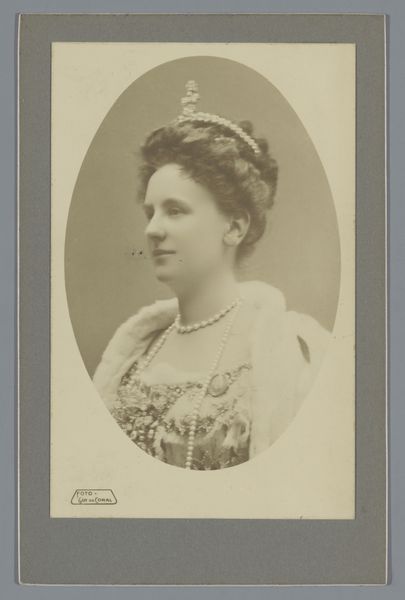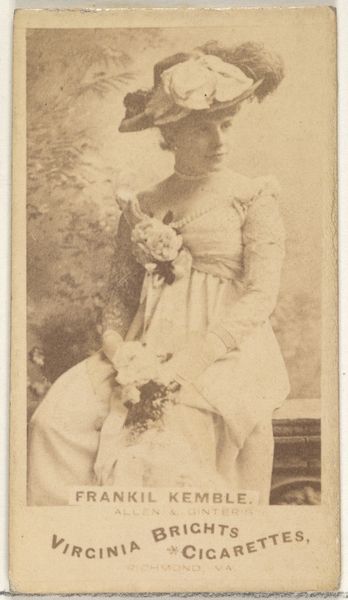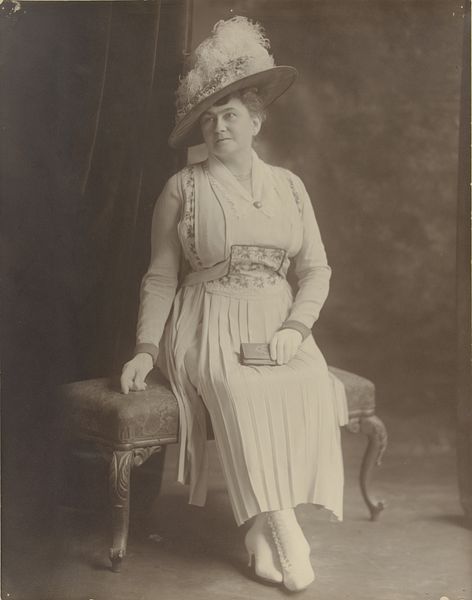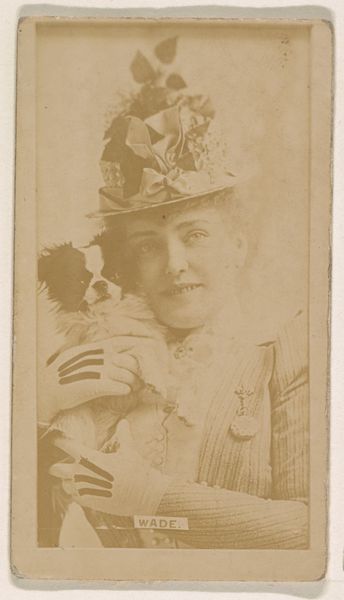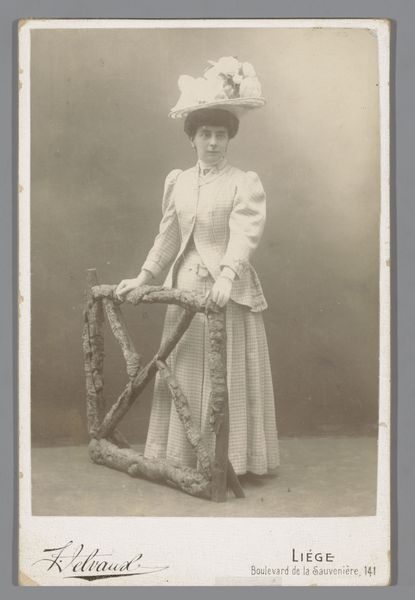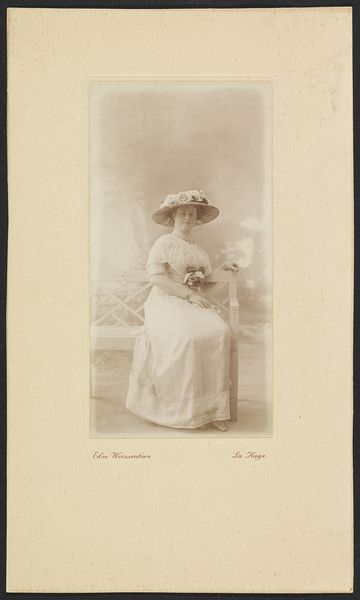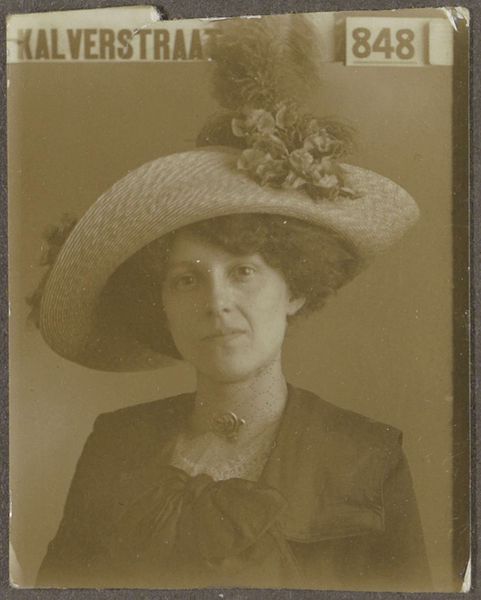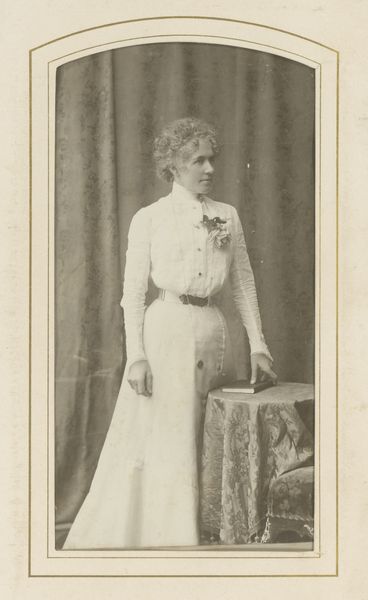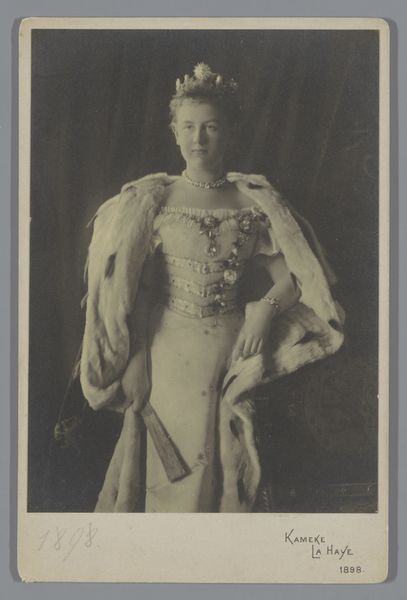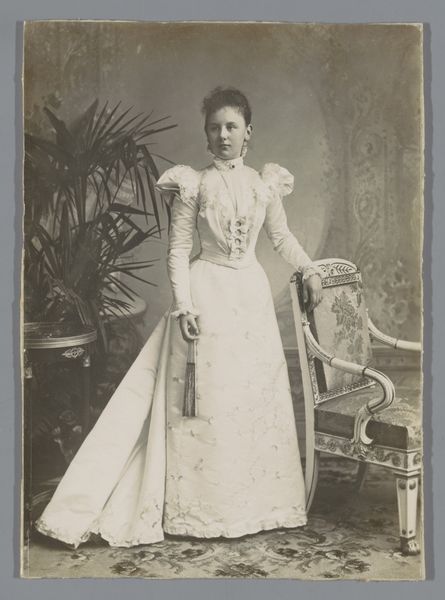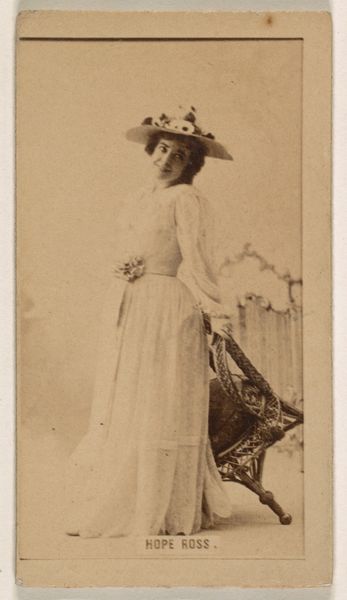
Dimensions: height 136 mm, width 88 mm
Copyright: Rijks Museum: Open Domain
Curator: This is a portrait of Princess Victoria Luise of Prussia, created by Erich Sellin in 1910. I think it’s fascinating how these images reflect the rigid structures of power at the time. Editor: My first impression is of the tonal gradations within the limited grayscale palette and the geometric contrast between the soft oval framing the subject, versus the strong linear brim of the hat. It guides my gaze directly to the Princess’s face. Curator: And that face speaks volumes, doesn’t it? Look at the almost suffocating formality of her attire—the high lace collar, the pearls—each element a marker of her aristocratic status, yet hinting at the restrictions placed upon her as a woman within that system. Consider the implications of this photograph, its original purpose. It wasn't just to capture an image but to project a specific representation of royalty to the masses. Editor: Yes, the staging is controlled. Yet there is something playful in the accessories; the large feathered hat festooned with blossoms softens the image considerably, injecting lightness into what might otherwise be a stark, uncompromising portrait. The texture of the fabric too introduces visual complexity that is crucial to understanding its composition. Curator: Precisely! It’s through those calculated details, the softened edges, that we can begin to unravel the complexities of her position. Victoria Luise wasn’t merely a princess; she was a political pawn, her marriage orchestrated to consolidate power, her very image meticulously crafted to maintain appearances, while upholding an empire built on inequalities. Editor: We also cannot disregard the photograph as a material object. This would have circulated widely. Think of its physical form and consider how this would have existed both as art object but also as accessible artifact. This would have disseminated the carefully chosen visual cues of dynastic authority to the wider world. Curator: Examining this photograph through an intersectional lens highlights how societal expectations shaped her life and constrained her identity, while this style romanticized privilege. We also need to remember it perpetuates a very particular ideal. Editor: Through our dual approaches—decoding structure, versus dismantling power structures—we get to the rich story held within one object! Curator: Indeed, and these visual dialogues are essential in understanding the role images play in perpetuating or challenging social norms.
Comments
No comments
Be the first to comment and join the conversation on the ultimate creative platform.

